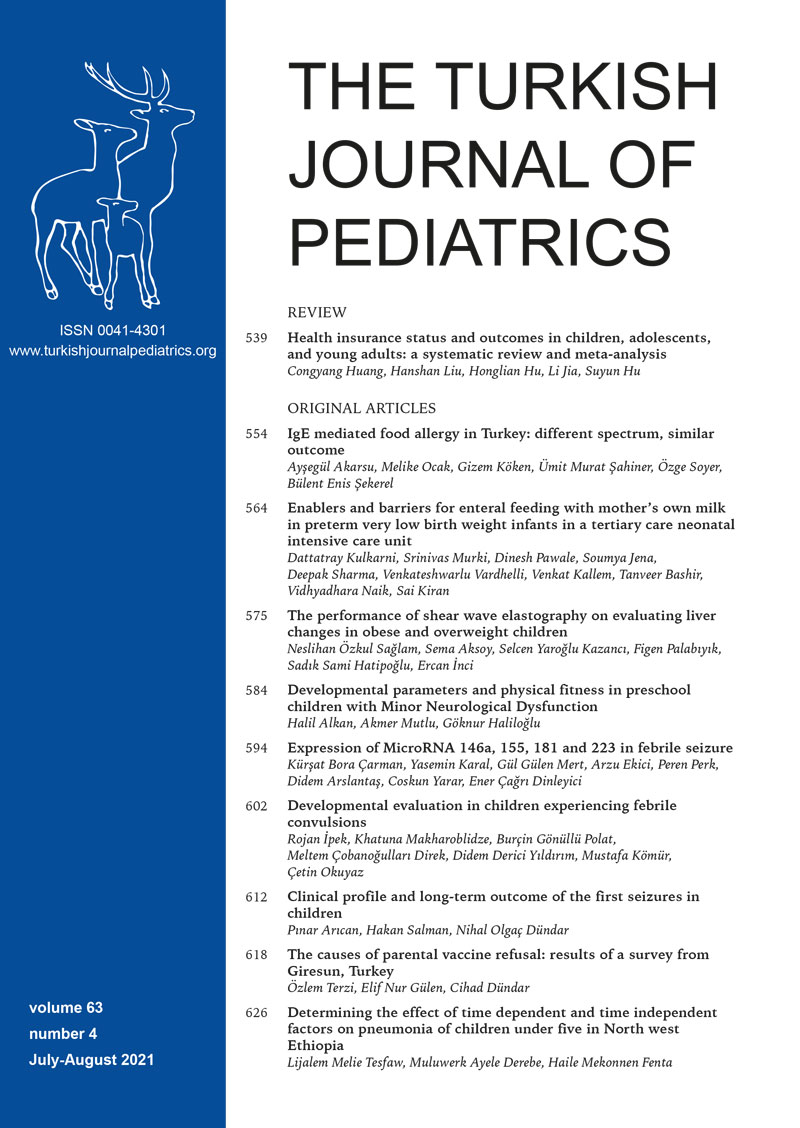Abstract
Background. The frequency of asthma increases in childhood and asthma is associated with risk factors varying across age groups. The aim of our study was to assess the prevalence of asthma and its associated risk factors in the first six years of life.
Methods. Within the scope of the Adana Pediatric Allergy and Risk Factor (ADAPAR) birth cohort study, 203 infants that had experienced at least one wheezing attack during the first year of life were followed for asthma development until the age of six years. Additionally, 223 infants that were followed within the scope of the same study and had no wheezing attacks in the first year of life were assigned to the control group.
Results. At the end of the sixth year, 46 (22.7%) infants were diagnosed with asthma and the use of antibiotics of the mother during pregnancy (OR: 2.98), the presence of allergic diseases in the mother (OR: 4.70) and sibling (OR:2.11), the presence of atopy (OR:4.76), and recurrence of wheezing in the first age (OR:17.35) were identified as risk factors for asthma.
Conclusions. The prevalence of asthma at six years of age was higher than that of other studies. Prevention of infections at an early age and during pregnancy can reduce the prevalence of asthma.
Keywords: asthma, childhood, risk factor, wheezing
Copyright and license
Copyright © 2021 The Author(s). This is an open access article distributed under the Creative Commons Attribution License (CC BY), which permits unrestricted use, distribution, and reproduction in any medium or format, provided the original work is properly cited.














